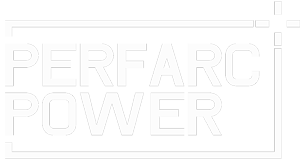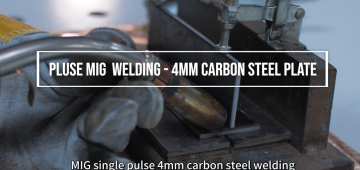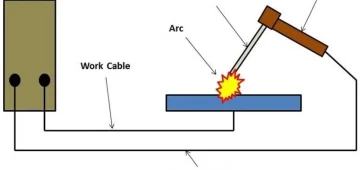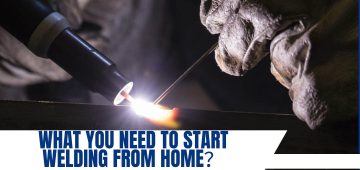If you’re interested in learning about arc welding, you’ve come to the right place. Arc welding is a process that involves melting two metals together using electricity to create intense heat. The heat melts the metals together in a molten pool, creating a strong bond between the two materials.
This process is called welding fusion, and it’s what makes welded structures so strong. When two metals are welded together, they effectively become one material, with the bond between them being as strong as the metals themselves.
In the following sections, we’ll explore the different types of arc welding, the equipment and safety gear you’ll need, and some tips for getting started with this fascinating process.
How Does Arc Welding Work?
The Basics of Arc Welding
Arc welding is a process that uses electricity to join two metals together. The two metals are the base metal and the electrode, which is attached to the welding gun. When the circuit is broken by removing the electrode from the base metal, it creates an arc of electricity which is extremely hot – temperatures of 11,000 Fahrenheit can be achieved! This molten pool of metal is what creates the weld.
There are a few things in arc welding that don’t change, regardless of the process you’re using. The materials being welded need to have a similar melting point, otherwise one will melt before the other, resulting in a failed weld. Power can usually be supplied via alternating (AC) or direct (DC) currents. The type of power supply can affect the settings for the weld so always check before you start. The more power, the higher the temperature of the arc. Manufacturers usually provide the standard settings for the equipment, but voltages should be changed to suit the job at hand. The choice of electrode can massively affect the outcome of the weld. Always clean the base metal with a metal brush or grinder before you start, even if you’re using a welding process that is compatible with contaminated base metals. Safety is essential! You’re dealing with seriously powerful electricity and extremely high temperatures. Protect yourself. Wear safety gear and keep a suitable fire extinguisher nearby.
Arc Welding Terminology
If you’re new to welding, there are a few technical terms you need to know. The following are some of the key terms used in arc welding:
- Electrode – the material that transfers the arc to the base metal, and controls the weld
- Arc – the arc of electricity between the base metal and electrode, which creates the heat required to weld
- Gas shield – the shield of inert gas surrounding the weld, usually carbon dioxide, argon, helium or a combination of the three
- Weld pool – the pool of molten metal that is formed from the base metal and electrode, and filler material if it is being used
- Base metal – the metal that is being worked on
In arc welding, the choice of electrode can have a significant impact on the outcome of the weld. The electrode is the material that transfers the arc to the base metal and controls the weld. There are various types of electrodes available, each with its own unique characteristics. Some electrodes are designed for welding specific metals, while others are more versatile. The type of electrode you choose will depend on the type of metal you are welding and the specific requirements of the job.
The arc is the arc of electricity between the base metal and electrode, which creates the heat required to weld. The arc is extremely hot, with temperatures of up to 11,000 degrees Fahrenheit. The heat generated by the arc causes the base metal and electrode to melt, creating a molten pool of metal that is used to form the weld.
The gas shield is the shield of inert gas surrounding the weld, usually carbon dioxide, argon, helium or a combination of the three. The gas shield is used to protect the weld from the air, which can cause contamination and weaken the weld. The gas shield is supplied either externally (via the welding machine) or through an electrode (via a flux coating), depending on the type of arc welding process being used.
The weld pool is the pool of molten metal that is formed from the base metal and electrode, and filler material if it is being used. The weld pool is used to form the weld and is shaped by the motion of the welding gun and the speed at which the weld is being laid down.
The base metal is the metal that is being worked on. The base metal needs to be clean and free from any contaminants, such as rust or oil, before welding can begin. Cleaning the base metal with a metal brush or grinder is essential, even if you’re using a welding process that is compatible with contaminated base metals.
MIG Welding
MIG welding, also known as gas metal arc welding (GMAW), is a highly versatile and easy-to-learn semi-automatic process suitable for indoor applications. This process uses a continuously fed solid wire electrode to create an arc of electricity that melts two metals together. The electrode also acts as the filler material to improve the weld. Shielding gas is supplied externally via the welding machine to protect the process.
MIG welding is best suited for indoor applications where there is shelter from the wind. It is not suitable for outdoor applications due to the need for shielding gas. However, MIG welding can be used on metals of various thicknesses, including steel, aluminum, nickel, and various alloys. The shielding gas can also be changed depending on the metals being used. Generally, MIG shielding gas is a concoction of CO2, oxygen, and carbon. The voltage can also be preset via the MIG welding machine to suit the application.
MIG welding is commonly used in projects such as automotive repairs, structural steelwork, and the manufacture of various objects such as furniture, computer components, and machinery for agriculture or mining. Its versatility and ease of use make it a popular choice for welding applications.
In summary, MIG welding is a highly versatile and easy-to-learn semi-automatic welding process that uses a continuously fed solid wire electrode. It is best suited for indoor applications and can be used on metals of various thicknesses. The shielding gas and voltage can be changed depending on the metals being used. MIG welding is commonly used in various industries due to its versatility and ease of use.
TIG Welding
TIG welding, also known as tungsten gas arc welding (GTAW), is a slow and precise process that produces high-quality and attractive welds. It is performed using a non-consumable, pointed tungsten electrode, which allows for superior precision. TIG welding is one of the few processes that does not require a filler metal, but you can use one if needed. The absence of filler makes TIG welding clean, with minimal cleanup required upon completion of the weld. If you do use a filler, you’ll need to feed it manually by hand.
The TIG welding gun features a pointed tungsten electrode, a connector, and a shielding gas. An arc is created when the electrode is applied to the base metal and then removed. It is a small, intense arc, which makes it ideal for high-quality, precision welding. TIG welding requires a shielding gas, which should be changed depending on the metals being used – argon is the most common.
Various tungsten electrodes are available to suit different types of welds. Pure tungsten electrodes are the most common and are applicable for metals such as aluminum. As with MIG welding, the external gas supply of TIG welding means it’s best performed indoors away from wind and drafts.
TIG welding is more difficult to learn than other welding processes due to its precision requirements. However, the results are worth it! TIG welding is best for welding round things and is commonly used in metal art sculptures. With high precision and minimal mess, TIG welding is ideal for thin sheet metals and projects that will be on show.
Overall, TIG welding is a slow but precise process that produces high-quality and attractive welds. It requires a pointed tungsten electrode and a shielding gas and is best performed indoors. It is more difficult to learn than other welding processes, but the results are worth it!
Stick Welding
Stick welding, also known as shield metal arc welding (SMAW), is the most common type of arc welding. It is suitable for use in both indoor and outdoor environments. This welding technique is preferred for repair and maintenance work because it can be used on most common metals and alloys, including steel, aluminum, and iron. Additionally, it can be used on dirty and rusted surfaces, making it a popular choice in the welding industry.
However, stick welding is not an easy technique to master. It is a highly skilled process and requires a long learning process. The ability to strike an arc can be difficult, but it is well worth it in the end.
The stick welding process involves using a fixed-length electrode that is coated in a flux of powdered metals. When heated with electricity, the flux creates the shielding gas, while the melting electrode produces the filler material to create the weld with the base metal. There is no need for an external gas supply, which makes stick welding the process of choice for remote and difficult environments.
Stick welding can produce spatter and be a bit messy, so there is usually some cleaning up to do afterward. The end result varies depending on the skill of the welder, but it must be said that stick welding does not usually produce the most attractive of welds. The characteristics of the weld can be changed by choosing a different flux coating and altering the angle of the weld.
Stick welding equipment is easily transportable, making it ideal for use almost anywhere. As there is no need for an external gas supply, stick welding is ideally suited to outdoor and hard-to-reach places. You can even stick weld in the wind and rain.
In summary, stick welding is a widely used form of arc welding that is suitable for both indoor and outdoor environments. It can be used on most common metals and alloys and is preferred for repair and maintenance work. While it is a difficult technique to master, it is well worth the effort, especially for remote and difficult environments.
Flux Cored Arc Welding (FCAW)
Flux cored arc welding (FCAW) is a welding process that combines the high productivity of MIG welding with the simplicity of stick welding. FCAW does not require an external gas supply, making it easy to transport and use outdoors. However, it is not recommended for thin metals and requires some cleanup after welding.
The FCAW process uses a continuously fed electrode with a flux core consisting of various compounds and powdered metals. When the electricity is transferred through the electrode to the base metal, an arc is formed. The flux produces a gas shield around the molten electrode, filler metal, and base metal in the weld pool. The residual slag that covers the weld also provides protection and can be easily removed when needed.
Flux-cored welding is usually performed with a drag technique, where the weld gun is pointing back into the weld pool and being pulled away from the completed weld. This technique is commonly used for heavy-duty industrial fabrication and manufacturing processes. However, it is generally not recommended for beginners and those with little experience as the technique can be difficult to master.
In summary, FCAW is a fast and efficient welding process that does not require an external gas supply. It is commonly used for heavy-duty industrial fabrication and manufacturing processes, but it is not recommended for thin metals. With some practice, it can be a valuable tool for welders looking to increase productivity and versatility in their welding projects.
Plasma Arc Welding
Plasma arc welding (PAW) is a welding process that uses a non-consumable pointed tungsten electrode to create a plasma arc. The plasma is created by pressurized gas, which is then ionized to conduct electricity. This produces a small, incredibly powerful arc that can reach temperatures over 55,000 Fahrenheit. PAW can be used on both thin and thick base metals, making it a versatile welding process.
Getting Started with Welding
If you’re just getting started with welding, Powerwelds has a guide to getting started with welding. This guide covers the welding process in more detail and the equipment you’ll need for a successful and safe weld. It also provides information on the career opportunities that welding offers.
PowerWelds offers a fantastic range of welding machines at entry-level prices, so if you want to try your hand at welding, it won’t cost you a fortune. You can also stock up on welding equipment like guns, torches, helmets, and accessories.
At PowerWelds, they build their equipment based on their customers’ feedback. If you want to stand out, check out their range of eye-catching welding helmets.
Overall, PAW is a high productivity welding process that produces precise and accurate welds with a high-quality finish. While it can be difficult to master, it is a popular choice for electronic applications, as well as in the aerospace, marine, and healthcare industries due to its high precision.
Frequently Asked Questions
What are the Primary Types of Arc Welding Processes?
There are five primary types of arc welding processes: Shielded Metal Arc Welding (SMAW), Gas Tungsten Arc Welding (GTAW), Gas Metal Arc Welding (GMAW), Flux-Cored Arc Welding (FCAW), and Submerged Arc Welding (SAW). Each process has its own unique characteristics and is used for different applications.
Can You Outline the Basic Steps Involved in the Arc Welding Procedure?
The basic steps involved in arc welding include preparing the workpiece, setting up the welding equipment, striking an arc, welding the joint, and finishing the weld. The welder must ensure that the workpiece is clean and free of any contaminants that may affect the quality of the weld.
What are the Essential Pieces of Equipment Needed for Arc Welding?
The essential pieces of equipment needed for arc welding include a welding machine, welding electrode, welding helmet, welding gloves, and safety glasses. The welding machine provides the power to create the arc, while the welding electrode is used to melt the metal and create the weld.
What are Some Common Issues Faced During Stick Welding and Their Solutions?
Some common issues faced during stick welding include porosity, undercutting, and lack of fusion. Porosity occurs when gas pockets are trapped in the weld, while undercutting is a groove that forms along the base metal. Lack of fusion occurs when the weld does not penetrate the base metal. These issues can be solved by adjusting the welding parameters, using the correct electrode, and ensuring that the workpiece is clean and free of any contaminants.
What are the Advantages and Disadvantages of Using Arc Welding Compared to Other Welding Methods?
The advantages of using arc welding include its versatility, portability, and low cost. Arc welding can be used on a variety of metals and can be performed in remote locations. However, arc welding has some disadvantages, including its low welding speed, high heat input, and the need for skilled welders.
How is Arc Welding Applied Across Different Industries?
Arc welding is used across a wide range of industries, including construction, manufacturing, automotive, and aerospace. It is used to join metal components and structures, repair damaged parts, and create new components. Arc welding is also used in the fabrication of ships, bridges, and buildings.





